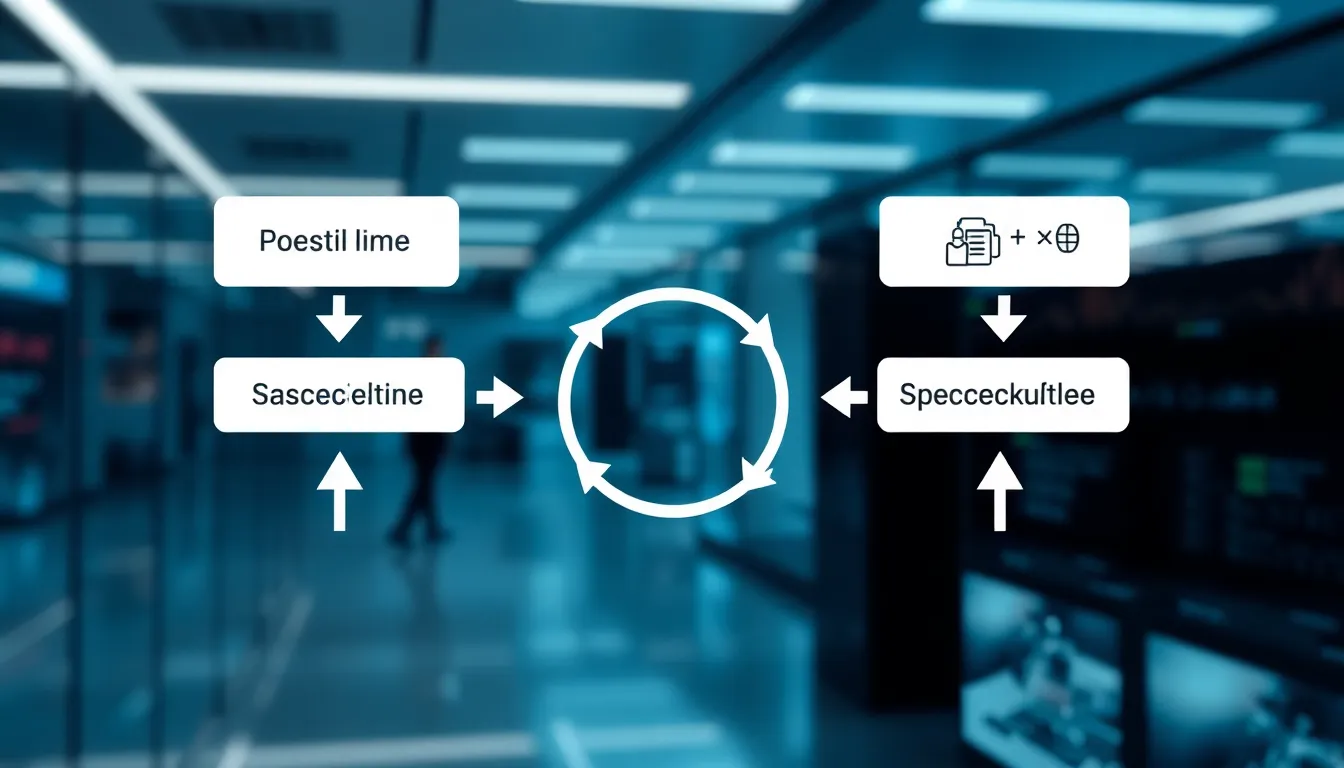In the fast-paced world of technology, AI feedback loops are the unsung heroes driving innovation. Imagine a self-improving system that learns from its own mistakes—like a toddler learning to walk but with way fewer faceplants. These feedback loops create a dynamic interplay between data and algorithms, allowing AI to refine its performance over time.
Table of Contents
ToggleUnderstanding AI Feedback Loops
AI feedback loops play a vital role in enhancing machine learning systems. These loops enable continuous improvements by making use of data-driven insights.
Definition of AI Feedback Loops
AI feedback loops refer to a systematic process where algorithms make predictions, analyze results, and refine their models based on outcomes. Through this cyclical method, AI systems adapt and improve performance over time. Data collection and analysis form the core of these loops. Insights gained from previous interactions guide future decisions, creating a self-reinforcing cycle of learning. This approach enables organizations to fine-tune AI applications, leading to more accurate results and efficient processes.
Importance in AI Systems
The significance of AI feedback loops lies in their ability to foster improvement. With continuous learning, AI systems become better equipped to handle data nuances. Feedback loops facilitate quicker adaptations to changing conditions, ensuring that AI remains relevant and effective. They enhance decision-making capabilities by utilizing real-time insights, which leads to more informed outcomes. In industries such as healthcare and finance, these loops allow AI to optimize operations, reduce errors, and increase overall performance. By nurturing a responsive system, organizations can drive innovation and maintain a competitive edge in the evolving tech landscape.
Types of AI Feedback Loops
AI feedback loops come in two primary forms: positive feedback loops and negative feedback loops. Each type serves distinct purposes within an AI system, influencing how algorithms learn and adapt.
Positive Feedback Loops
Positive feedback loops amplify output based on successful results. In this scenario, when an AI system makes accurate predictions, it receives reinforcement for those actions. This reinforcement promotes further iterations of similar choices, leading to improved performance over time. As more data reinforces desirable behaviors, systems become increasingly effective, scaling up their accuracy. An example includes recommendation systems that adjust based on user interactions, curating content that aligns with preferences. Companies leveraging these loops can enhance user engagement significantly.
Negative Feedback Loops
Negative feedback loops aim to diminish errors in AI predictions. When an AI system identifies inaccuracies, it modifies its approach, striving for less repetition of mistakes. This constant correction helps refine algorithms and leads to more reliable outcomes. For instance, in self-driving cars, sensors assess mistakes in navigation and adjust driving behaviors accordingly. In this way, operational efficiency increases while safety improves. Organizations that implement negative feedback loops can optimize their models, ensuring sustained accuracy amid evolving challenges.
Applications of AI Feedback Loops
AI feedback loops are integral to numerous applications across various fields. These loops enhance efficiency, accuracy, and overall performance.
In Machine Learning
AI feedback loops significantly impact machine learning processes. Algorithms analyze initial predictions to assess their accuracy. Each evaluation refines the model, which enhances future predictions. Increased data leads to more reliable outputs, improving system learning. Examples include spam detection systems that adapt to new patterns, ensuring greater accuracy over time. Optimization occurs as these models adjust response strategies based on real-world data and user interactions. Continuous learning enables machine learning systems to evolve, making them more effective and responsive to user needs.
In Autonomous Systems
Autonomous systems heavily rely on AI feedback loops for operational success. Robots and vehicles utilize real-time data to navigate their environments. Adjustments occur based on sensor input feedback, which fine-tunes movement and decision-making. An example includes drones that change flight paths based on obstacle detection. Performance gets enhanced through each interaction, leading to safer and more efficient operations. Consequently, these systems demonstrate improved adaptability, which is crucial for dynamic environments such as urban areas or disaster zones. The integration of feedback loops ensures autonomous systems respond appropriately under varying conditions.
Challenges with AI Feedback Loops
AI feedback loops present several challenges that can hinder their effectiveness. These challenges include ethical considerations and technical limitations that necessitate careful examination.
Ethical Considerations
Ethical dilemmas arise when AI feedback loops perpetuate bias. Data used for training models often reflects societal prejudices, resulting in discriminatory outcomes. When algorithms adjust based on flawed data, they reinforce existing inequalities. Transparency in data sourcing becomes crucial, ensuring fair representation is prioritized. Users must also understand how decisions are made, fostering trust and accountability in AI systems. Organizations must consider the implications of autonomous decision-making, especially in sensitive areas like criminal justice and hiring. Mitigating these biases is essential for ethical AI deployment, ensuring equitable outcomes for all stakeholders.
Technical Limitations
Technical constraints often impact the efficacy of AI feedback loops. Data quality varies significantly, affecting the accuracy of predictions. Inadequate or incomplete datasets can lead to suboptimal learning outcomes. Algorithms may struggle with overfitting, where they become too tailored to training data, reducing their generalizability. Furthermore, computational resources impose limits on the complexity of models that can be employed. Real-time data integration poses another challenge, as outdated information can compromise decision-making. Addressing these limitations is vital to enhance the reliability and performance of AI systems across different sectors.
Future of AI Feedback Loops
AI feedback loops are evolving rapidly, driving forward technological advancements with significant potential. Continuous development in this area brings innovative approaches and transformative shifts.
Innovations and Trends
Emerging trends focus on integrating AI feedback loops into various sectors. Enhanced algorithms improve efficiency and effectiveness through automation. Collaborative AI systems leverage data from multiple sources, promoting richer learning experiences. Real-time data utilization allows for quicker adaptations, leading to smarter decision-making. Moreover, advancements in explainable AI foster transparency, ensuring stakeholders understand how decisions arise. Companies increasingly embrace these changes, propelling their competitive edge.
Potential Impacts on Society
AI feedback loops profoundly influence societal structures. They promote improved healthcare outcomes by enabling predictive analytics, which allows for timely interventions. In education, personalized learning experiences cater to individual needs, enriching student engagement. Additionally, advancements in public safety arise from enhanced surveillance systems, which utilize real-time data for optimal responses. Ethical considerations remain critical, as society must address inherent biases to ensure fairness. As these systems develop, fostering trust and accountability becomes essential for broader acceptance and positive impact.
Conclusion
AI feedback loops are transforming the landscape of technology by driving continuous improvement and adaptability. Their ability to refine algorithms based on real-time data enhances decision-making and operational efficiency across various sectors. As these systems evolve they promise to unlock new potentials while addressing ethical challenges and technical limitations. The future of AI feedback loops appears bright with innovations that could reshape industries and improve societal outcomes. Embracing this technology responsibly will be key to harnessing its full benefits while ensuring fairness and transparency in AI applications.





